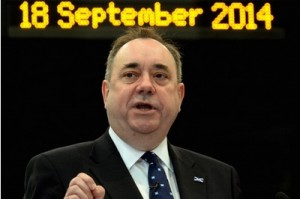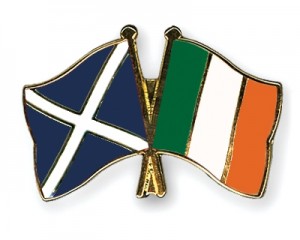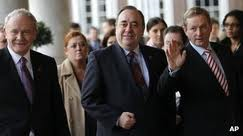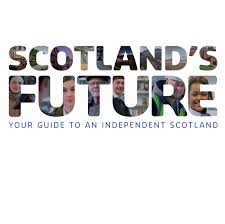Some thoughts on the draft Scottish constitution
On 16th June, with a little over three months to go before the Scottish independence referendum, the Scottish Government, represented by the Deputy First Minister, Nicola Sturgeon, published a draft constitution for an independent Scotland.
The seventy-four page document, formally titled The Scottish Independence Bill: A Consultation on an Interim Consultation for Scotland; lays out the basics on the form an independent Scotland will take. As such, it can be regarded as building on the Scottish independence movement’s ‘manifesto’ for independence, Scotland’s Future, published in November of last year.
The language of the document centres on the word ‘sovereignty’, which appears more than thirty times in the document.* The case for Scottish independence as being based on the right of the people of Scotland to govern their own affairs to the maximum extent within Scotland remains central, as opposed to staking ethnic claims on any difference between ‘the Scottish’ and ‘the British’ or ‘the English’. As the document states: ‘Sovereignty means the people of Scotland always getting the government we vote for to govern our country the way we want.’ (p. 4) The document, like Scotland’s Future, makes not a single mention of the word ‘nationalism’. Yet it is also stated that ‘the fundamental principle’ that ‘the people are sovereign…resonates throughout Scotland’s history and will be the foundation stone for Scotland as an independent country’, (p. 4) pointing directly to the clearly nationalist historical perspective that continues to provide a central plank of the independence movement’s position. In the ‘Explanatory Notes’ section of the document this is elaborated upon, evoking Scotland’s history as an independent kingdom throughout the medieval period, styling a kind of genealogy for independence: ‘In Scotland, the people are sovereign…It is a principle charged with historical resonance, affirming the ancient Scots constitutional tradition that Monarchs and Parliaments are the servants of the people. Sovereignty of the people was clearly set out as early as the Declaration of Arbroath in 1320…’ (p. 27) It is even implied that, historically, the doctrine of parliamentary sovereignty conflicts on a basic level with ‘the Scots constitutional tradition of popular sovereignty’. (p. 27) A parallel is drawn subsequently between this tradition and the modern idea of self-determination. (p. 28) The avowedly civic face of contemporary Scottish nationalism – in which the word ‘nationalism’ itself is rejected – is supplemented by a discourse of difference based less on ethnicity than on a specific national(ist) historical narrative. At the same time, this narrative, while not in itself exclusionary, establishes a clear dividing line between the Scottish nation of the independence movement and its ‘Other’ – the present political union of Scotland and England.
In the rest of the draft constitutional outline contained in the document, the various positions of the SNP are re-stated, such as the preservation of monarchy in an independent Scotland, automatic transition from British citizenship to Scottish citizenship, independent Scotland continuing its membership of the EU without interruption, and the commitment to nuclear disarmament. Anticipating the question of an opt-out of independence by certain Scottish regions, such as the Orkney and Shetland Islands, the document states that ‘Scotland’s territory, including all islands, internal waters and territorial sea, will remain exactly as it is at present. There is no question of any changes being made.’ The most notable change set out in the document is the codification of a Scottish constitution in the case of Scottish independence (in contrast to preserving continuity with the ‘unwritten’ British constitution). The independence campaign, in Scotland’s Future as elsewhere, has consistently emphasised the continuities that will link Scotland as part of the UK to any independent Scotland. Much of this continues to figure in the draft constitution, yet by any measure the draft for a fully written and codified constitution founded on the principle of popular sovereignty will mark a historic and fundamental change. It will also likely ignite debate among constitutional lawyers, given the determination to marry popular sovereignty with commitment to preservation of the monarchy in an independent Scotland.
It is tempting to draw parallels and contrasts between the movement for Scottish independence and the last nationalist movement that pursued secession from the United Kingdom: Irish separatist nationalism (also known as Irish Republicanism) of the early twentieth century. Prior to the achievement of Irish independence, the secessionist Irish national assembly, Dáil Éireann, composed almost wholly of members of Sinn Féin, the Irish revolutionary party, published a brief provisional constitution, the ‘Dáil Constitution’ of 1919. That document consisted of only five brief articles, and only 370 words. In contrast to the draft Scottish constitution, it did not even establish a provision for an Irish head of state. As Charles Townshend notes, ‘the constitution prepared for the first meeting [of the Dáil] actually made no mention of a state – it was not the constitution of Ireland, but the constitution of the Dáil.’ (Townshend 2013: 62) The major difference, of course, is that the members of the First Dáil Éireann were operating in a context wherein a) they had retroactively endorsed the declaration of the Irish republic made in the Easter Rising of 1916, b) had themselves renounced Ireland’s political connection with Britain through a brief declaration of independence and the intent to have nothing to do with the British Parliament, and c) public order was beginning to break down, and would soon enter a cycle of violence that would be sustained for more than two years to come by both British and Irish republican violence. No such conditions, or ones resembling them, have ever been relevant for the Scottish independence campaign. The Dáil Constitution became defunct in the context of the Anglo-Irish Treaty and was superseded by the Constitution of the Irish Free State (1922) a genuine constitution that, as some commentators have argued (English 2007: 310), merged republican content and thinking with constitutional monarchical form. This, I would argue, is the same judgement that best describes the draft Scottish constitution, and the Constitution of the Irish Free State is its most obvious precedent within a ‘British Isles’ context. Whether or not any Scottish Constitution of an independent Scotland would form the basis (as the Constitution of the Irish Free State did for Ireland) of a later and complete breaking of ties with ‘the rest of the UK’ is a question that remains speculative for now.
*An excellent recent study of the significance of ideas and discourses of popular sovereignty in nationalism can be found in: Bernard Yack, Nationalism and the Moral Psychology of Community (Chicago, Chicago University Press, 2012)
Richard English, Irish Freedom: The History of Nationalism in Ireland (Basingstoke, Palgrave Macmillan, 2007)
Charles Townshend, The Republic: The Fight for Irish Independence (London, Allen Lane, 2013)






